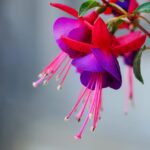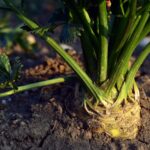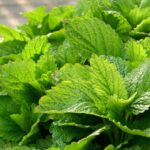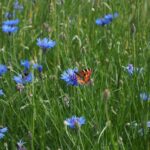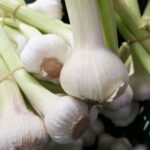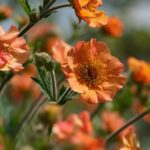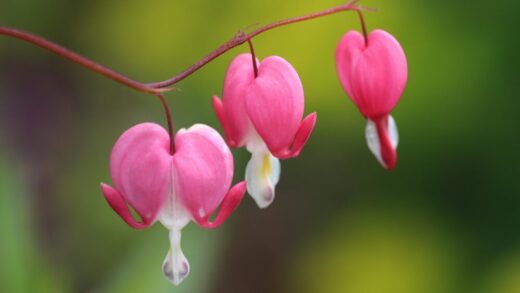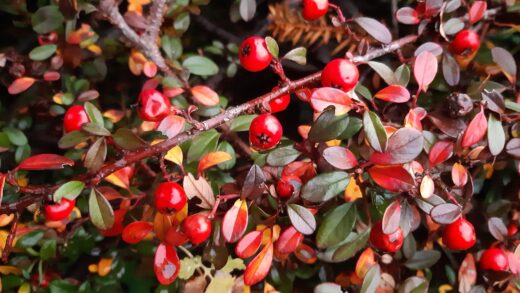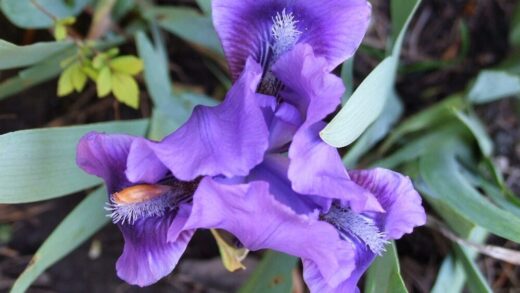The African daisy, this resplendent beauty originating from South Africa, is rightly a popular choice among lovers of sunny gardens. Its vibrant, daisy-like flowers boast shades of orange, yellow, salmon, and white, often with a darker center, bringing a true splash of color to any flowerbed or container. For these wonderful plants to shine in all their glory, it is worth getting to know and ensuring them the optimal care conditions. From choosing the right growing location, through proper watering, to protection against pests – every small detail can contribute to them rewarding us in our garden with a long-lasting bloom. Cultivating this impressive plant is not overly complicated, but acquiring some basic knowledge is essential to achieve abundant flowering and maintain the plant’s health.
Introduction to the African daisy
The African daisy, botanically known as Dimorphotheca sinuata, is a plant species from the Asteraceae family, native to the sunny, arid regions of South Africa. It is often referred to as the Cape marigold or simply sun-lover, alluding to its affinity for light and its radiant flowers. Understanding its natural habitat is crucial for successful cultivation, as this helps to comprehend its fundamental needs, such as abundant sunlight and well-draining soil. Its value as an ornamental plant is indisputable, as with little care, it can offer an impressive sight, attract pollinating insects, and liven up the garden atmosphere.
Morphologically, the African daisy is a low to medium-height plant with a bushy growth habit, usually reaching a height between 15 and 30 centimeters, although some varieties can grow taller. Its leaves are simple, elongated, often lobed or with toothed edges, and their color varies from light green to dark green. The flowers form daisy-like heads, which can reach a diameter of 5-7 centimeters; the ray florets are brightly colored – typically orange, yellow, apricot, or white – while the disc florets in the center of the head are darker, often brownish or purplish, forming a contrasting center. Interestingly, the flower heads open fully in sunny weather, while they close in cloudy weather or at night, following the sun’s movement.
Regarding its growth habits, the African daisy is generally cultivated as an annual plant in gardens in temperate climates, as it does not tolerate frost well. However, in its native habitat in South Africa, during favorable, frost-free winters, it can also behave as a short-lived perennial. Its typical life cycle in the temperate zone lasts from spring sowing or seedling planting, through the abundant summer and early autumn flowering, until the first serious frosts. It has an extremely fast growth rate, so it can form attractive, flower-filled cushions in the garden in a short time.
Its horticultural importance and use are very diverse, thanks to its vibrant colors, long flowering period, and relatively low care requirements. It is excellent for decorating borders, flower islands, rock gardens, and other sunny garden areas. Planted in groups, it forms an impressive splash of color, but also thrives well in balcony boxes and other garden containers. It plays an important role in attracting pollinating insects, such as bees and butterflies, thus contributing to the ecological balance of the garden. Due to its drought tolerance, it is also becoming an increasingly popular choice in low-water-use gardens (xeriscaping).
More articles on this topic
Choosing the right growing location
For the African daisy, the most important factor is abundant sunlight, as even its name suggests an affinity for light. It needs at least six to eight hours of direct sunlight per day to flower abundantly and develop healthily. In shadier locations, the plant becomes leggy, develops weaker stems, and flowering is sparse or absent altogether. Light intensity also directly affects the vibrancy of the flower colors; the more sunlight it receives, the brighter and more intense the colors will be.
Regarding soil type, the African daisy prefers well-draining soil with a loose structure. Ideal for it is sandy or loamy soil that does not retain excess water, thus preventing root rot. Heavy, clayey, compacted soils where water can stagnate around the roots, especially during rainy periods or in case of overwatering, should be avoided. To improve soil structure, it is recommended to incorporate compost or other organic matter before planting, which increases permeability and enriches the soil with nutrients.
Soil acidity, i.e., the pH value, also influences the optimal growth of the African daisy. Generally, it prefers a neutral to slightly acidic pH range (pH 6.0-7.0). Before planting, it would be good to check the pH value of the garden soil with a simple test. If the soil is too acidic or too alkaline, the pH can be corrected with appropriate soil amendments, although the African daisy is relatively tolerant in this regard and can grow satisfactorily in a wider pH range if other conditions are met.
When choosing the growing location, wind protection and good air circulation must also be considered. Although the plant is generally resilient, strong, gusty wind can damage the more fragile stems and flowers. However, a certain amount of air movement is beneficial, as it helps prevent fungal diseases by keeping the foliage dry. It is therefore advisable to look for a sunny spot, protected from strong winds, but where air can circulate freely between the plants and where its vibrant colors will be visually well highlighted.
More articles on this topic
Secrets of planting
The most favorable time to plant the African daisy is after the last spring frosts, when the soil has warmed up sufficiently. The seeds can be sown directly outdoors, but for earlier flowering, it is better to grow seedlings indoors at the end of February or in March. The advantage of direct sowing is simplicity, while growing seedlings allows the plants to become stronger before transplanting. Before planting, the soil must be thoroughly worked, weeded, and, if necessary, its structure improved with compost.
When sowing, the seeds are covered only with a thin layer of soil, about 0.5-1 cm deep. The ideal distance between seeds is about 15-20 cm, so that the adult plants have enough space to grow. For germination, they need warmth, a temperature between 18 and 21 degrees Celsius, and moderately moist soil. Germination usually takes 7-14 days, during which time it is important to ensure consistent soil moisture, but overwatering should be avoided. For even distribution of seeds, the fine seeds can be mixed with a little sand before sowing.
If you opt for growing seedlings, the young plants must be gradually acclimated to outdoor conditions before transplanting; this process is called hardening off. About a week before the planned transplanting, start taking the seedlings outdoors daily for a few hours, gradually increasing the duration and exposure to the sun. When transplanting seedlings, be careful not to damage the roots and maintain the previously mentioned distance of 15-20 cm. After transplanting, water the plants thoroughly so that the soil settles well around the roots.
In the case of container cultivation, choose a pot of appropriate size, with a diameter and depth of at least 15-20 cm, to ensure enough space for root development. The bottom of the pot must definitely have drainage holes so that excess water can drain away. Use good quality, loose potting soil, specifically designed for flowering annuals, or mix universal potting soil with sand and perlite for better drainage. Plants in containers must be watered more frequently than those in the garden, especially in hot and dry weather.
Light requirements and temperature conditions
The African daisy is an extremely light-loving plant, which is not surprising given that it originates from the sunny landscapes of South Africa. Abundant, direct sunlight is essential for the opening of the flowers and the healthy development of the plant. The flowers typically open only in full sun, while they close in cloudy, rainy weather or in the evening. This phototropic behavior, i.e., the reaction to light, is one of the most distinctive features of the plant and contributes to the fact that it can always attract pollinators under the most optimal conditions.
The ideal temperature range for the African daisy is warm, summer weather. It tolerates heat well and develops best at temperatures between 20 and 30 degrees Celsius. However, excessively high, prolonged heat, above 35 degrees Celsius, can stress the plant, which can lead to reduced flowering, especially if it does not receive sufficient moisture. Low temperatures and frost, on the other hand, are very poorly tolerated, which is why it is cultivated as an annual plant in the temperate zone.
Due to its frost sensitivity, it is extremely important to plant the African daisy outdoors only after the danger of spring frosts has passed. Even light frosts can damage the foliage and flowers, and more significant sub-zero temperatures can lead to the death of the plant. It is precisely for this reason that, in colder climate regions, pre-grown seedlings are often planted, or the seeds are only sown in May. Attention should also be paid to the microclimates in your garden; for example, a south-facing, sheltered wall section can provide a warmer environment.
Temperature also plays an important role in seed germination and the development of young seedlings. The optimal soil temperature for seed germination is between 18 and 21 degrees Celsius. If the soil is too cold, germination may be delayed or even not occur at all. For young plants, the warm, but not scorching, environment is most favorable during the initial growth phase. Sudden temperature fluctuations can stress tender seedlings, so it is important to ensure a balanced, warm environment.
The art of watering
When watering the African daisy, it is important to find a balance between providing moisture and respecting the plant’s drought tolerance. Since its natural habitat is characterized by dry, semi-desert areas, it is considered a moderately drought-tolerant plant, which means it tolerates short periods of drought better than excess moisture. Overwatering is one of the most common mistakes in its care, which can lead to root rot and other fungal diseases. Therefore, well-draining soil and a cautious watering practice are essential.
When watering is necessary is most easily determined by checking the soil moisture. Insert your finger about 2-3 centimeters deep into the soil; if it feels dry, it is time to water. The frequency of watering depends largely on weather conditions, soil type, and whether the plant is growing in the garden or in a pot. On hot, dry summer days, more frequent watering may be necessary, while during cooler, cloudy periods, less frequent watering is needed. The plant itself can also show signs of thirst: the leaves may begin to wilt slightly, but this should not be regularly awaited.
In terms of watering technique, deep but less frequent watering is more beneficial than shallow, frequent watering. Deep watering encourages the roots to penetrate deeper into the soil, making the plant more resistant to drought. Water directly at the base of the plant so that the water reaches the root zone, and avoid unnecessarily wetting the foliage, especially in the evening, as this can promote the development of fungal diseases. The best time to water is early in the morning, so that the leaves have time to dry during the day and evaporation loss is minimal.
The water needs of African daisies grown in containers differ from those in the garden. The soil in pots and window boxes dries out more quickly, especially in sunny, windy locations, which is why these plants must be watered more frequently, sometimes even daily, during the summer heat. However, it is important that the drainage holes at the bottom of the pot remain unobstructed and that the pot does not sit in stagnant water, as this can also cause root rot. The watering of any overwintered plants must be significantly reduced in winter, receiving only enough water to prevent their soil from drying out completely.
Nutrient supply and fertilization
The African daisy is generally not among the particularly nutrient-demanding plants, so fertilization should be done sparingly. Excessive nutrient supply, especially fertilizers with high nitrogen content, can do more harm than good. Abundant nitrogen can stimulate strong vegetative growth, meaning the plant develops many leaves and shoots, but at the expense of flowering, i.e., fewer and less colorful flowers. Therefore, moderation is the key word in nutrient supply.
The best solution is to ensure an adequate nutrient content in the soil even before planting. Incorporating mature compost or well-rotted organic manure into the soil before planting usually provides the plant with sufficient nutrients for the entire growing season. These organic materials decompose slowly, thus gradually and balancedly supplying the plant with the necessary macro and microelements, while also improving soil structure and its water retention capacity.
If the soil is particularly poor or if the plant’s flowering intensity is below expectations, supplemental fertilization can be considered. In this case, choose a liquid fertilizer with low nitrogen content and higher phosphorus and potassium content, specifically developed for flowering plants. Phosphorus promotes abundant flowering and root development, while potassium increases the plant’s resistance. Fertilization can be done during the growing season, from the beginning of flowering, every 2-4 weeks, according to the instructions on the product packaging, but a more dilute solution is always preferred.
It is important to observe the plant’s reactions and recognize the signs of nutrient deficiency or excess. Yellowing leaves (especially the lower ones), slow growth, or poor flowering can indicate a nutrient deficiency. Conversely, excessively lush, dark green foliage with few flowers suggests an excess of nitrogen. After a correct diagnosis, the nutrient supply can be corrected in a targeted manner. However, in general, in the case of the African daisy, the principle “less is sometimes more” usually applies to fertilization.
Pruning and removing spent flowers
Regular removal of spent flowers, also known as “deadheading,” is crucial for maintaining continuous and abundant flowering of the African daisy. When a flower fades and begins to form seeds, the plant directs much of its energy to this process instead of developing new flowers. By removing the spent heads, you “trick” the plant, encouraging it to produce more flowers, thereby extending the flowering period, often until the first frosts. Additionally, removing spent flowers also improves the aesthetic appearance of the plant, making it tidier and more well-groomed.
The technique for removing spent flower heads is simple: the faded flower, along with the flower stalk, is cut or pinched off down to the first healthy leaf or branching point. This operation can be done with sharp, clean pruning shears or even with your fingers. It is important to remove not only the petals but the entire flower head with part of the stem to prevent seed capsule formation. This task should be done regularly, at least once or twice a week, inspecting the plants for faded parts.
In the case of young African daisy seedlings, pinching the tips can promote a bushier, denser growth habit. When the young plant reaches a height of about 10-15 cm and has already developed a few pairs of true leaves, the tip of the main shoot can be carefully pinched off. This encourages the plant to develop side shoots, resulting in a denser, more compact bush that will ultimately produce more flowers. This operation should only be done at the beginning of the growing season, before flowering begins.
Light pruning may be necessary if the plant becomes leggy, bare at the base, or if flowering diminishes mid-season. In this case, part of the stems can be cut back by about half, which can stimulate the formation of new shoots and flowers, revitalizing the plant. However, drastic pruning should be avoided, especially during summer heat, as it can shock the plant. At the end of the season, after the first frosts, dead plant debris should be removed from the garden to maintain hygiene and prevent pests and diseases from overwintering for the next year.
Overwintering strategies
The African daisy originates from warm climates, so it generally does not survive temperate winters outdoors. For this reason, most gardeners treat it as an annual plant and sow new seeds or plant seedlings each spring. In regions where winters are mild and frost-free (for example, parts of Southern Europe or the southern states of the USA), the African daisy can also behave as a short-lived perennial and flower for several years. In colder climates, overwintering can be a challenge and requires careful consideration of whether the effort is worthwhile.
If you nevertheless attempt overwintering, plants grown in containers have the best chance of success. Before the first frosts, potted plants should be moved to a bright, cool, but frost-free place, for example, an unheated greenhouse, a winter garden, or a bright windowsill in a cool room. The ideal overwintering temperature is between 5 and 10 degrees Celsius. During this period, the plant enters dormancy, so watering should be reduced to a minimum, just enough so that the soil does not dry out completely. Fertilization is not necessary at this time.
Another possible method for overwintering is rooting cuttings. At the end of summer or in early autumn, before the frosts set in, cuttings can be taken from the tips of healthy, non-flowering shoots. Remove the lower leaves from the approximately 8-10 cm long cuttings, then the cut surface can be dipped in rooting hormone (although this is not always necessary) and planted in a moist, loose medium (e.g., a mixture of perlite and peat). Keep the cuttings in a warm, bright place and ensure high air humidity (e.g., by covering them with a transparent plastic film). Rooted cuttings can be planted outdoors in spring. This method is advantageous because you start the next season with young, vigorous plants.
Of course, the simplest and most widespread “overwintering” strategy is to collect and store seeds. Allow the seeds that develop from the faded flowers to ripen on the plant, then collect them in dry, sunny weather, before the seed capsules open and the seeds disperse. Dry the seeds thoroughly, then store them in a paper bag or an airtight container in a cool, dark, and dry place until the next spring sowing. This way, you ensure that you can also enjoy the splendor of these wonderful flowers next year. In some milder climate regions, the plant may also self-sow, and new seedlings may appear the following spring.
Pests and diseases: prevention and control
Although the African daisy is generally considered a resilient plant, it can occasionally be attacked by certain pests. The most common problems can be caused by aphids, spider mites, and thrips. Aphids are small, green or black insects that suck sap from young shoots and the underside of leaves, weakening the plant and excreting honeydew, which can lead to the development of sooty mold. Spider mites are tiny, spider-like creatures that spin a fine web on the leaves and, by sucking sap, cause yellowing and leaf drop, especially in dry, warm weather. Thrips are small, flying insects that damage flower petals and leaves, causing silvery spots and deformations. For early detection of pest presence, inspect the plants regularly, especially the underside of leaves and flower buds.
In pest control, it is advisable to first prioritize environmentally friendly methods. In case of minor aphid infestations, it may be sufficient to wash them off the plant with a strong water jet or spray with soapy water (e.g., a potassium soap solution). Against spider mites, increasing air humidity (e.g., misting the plants) can help, as these pests prefer dry conditions. Neem oil-based products can also be effective against aphids, spider mites, and even thrips, while being relatively gentle on beneficial insects. In case of more severe infestations, if biological methods do not prove sufficient, the use of specific insecticides may be necessary, but these should always be used cautiously and according to the user instructions.
The African daisy is attacked by relatively few diseases, but unsuitable growing conditions can promote the development of certain problems. The most common problems can be caused by fungal diseases, such as damping-off, powdery mildew, downy mildew, or root or stem rot. These diseases usually develop as a result of excessive moisture, poor air circulation, too dense planting, or stagnant water. Damping-off threatens young seedlings, powdery mildew forms a white, powdery coating on the leaves, downy mildew causes yellowish spots and a grayish mold growth on the underside of the leaves, while root rot leads to wilting and death of the plant.
To prevent diseases, the most important thing is to ensure suitable growing conditions: well-draining soil, appropriate spacing between plants for good air circulation, watering in the morning at the base of the plant, and avoiding unnecessarily wetting the foliage. It is also important to maintain garden hygiene, for example, by removing dead plant debris and applying crop rotation. If, nevertheless, a fungal disease appears, the first step is to remove and destroy the affected plant parts. In milder cases, copper or sulfur-based fungicides can help, and in case of more severe infections, the use of specific fungicide products may be necessary. If possible, choose varieties more resistant to diseases.
Companion planting in the garden: harmonious plant combinations
The African daisy, with its vibrant colors and sun-loving nature, combines excellently with other plants with similar requirements, allowing us to create diverse and long-flowering garden areas. When choosing companion plants, the primary criterion is that they also prefer full sun, well-draining soil, and moderate watering. It is important to also consider the mature size of the plants, their habit, and flowering time to create a harmonious and aesthetically pleasing composition that offers interest throughout the season.
Excellent companion plants for the African daisy can be other, also drought-tolerant and sun-loving annuals or perennials. It combines very well, for example, with gazania (Gazania), verbena (Verbena), portulaca (Portulaca grandiflora), various ornamental grasses, blue salvia (Salvia farinacea), or cosmos (Cosmos bipinnatus). These plants not only have similar environmental requirements, but with their different heights, leaf textures, and flower shapes, they can create interesting contrasts and an impressive overall effect. Plants with grayish or silvery foliage, such as dusty miller (Senecio cineraria) or lavender, also excellently highlight the vibrant colors of the African daisy.
The African daisy can be used versatilely in garden design. Lower varieties are ideal for the foreground of borders, along paths, or in sunny corners of rock gardens. Planted in groups, they form an impressive splash of color, filling empty spaces in larger beds. Its vibrant orange, yellow, or salmon flowers serve as excellent focal points, but also fit well into flower beds with warm color schemes. By combining different color varieties, a playful, cheerful effect can be achieved. It is important to also pay attention to the contrast of the foliage; finer textures of ornamental grasses or larger leaves of perennials can well complement the simpler leaves of the African daisy.
Avoid combining it with plants that have significantly different requirements, for example, shade-loving or very water-demanding species, as these would either suffocate the African daisy or not feel well in its sunny, drier environment. Also ensure that companion plants do not grow too tall, thus shading the light-loving African daisy. Always provide enough space for each plant for its growth and adequate air circulation, thus also preventing the development of diseases. Well-chosen plant combinations not only elevate the aesthetic level of the garden but also contribute to increasing biodiversity and attracting beneficial insects.
Varieties and cultivars of the African daisy
The genus Dimorphotheca includes several species, but in gardens, Dimorphotheca sinuata and its hybrids, as well as its varieties, are most commonly found. It is important to distinguish the genus Dimorphotheca from the genus Osteospermum, which is also often called African daisy or Cape daisy. Although the genera are related and their appearance can be similar, Osteospermum species are usually perennials and may have slightly different care requirements. Dimorphotheca sinuata is known in the temperate zone primarily as an annual plant, although in its native habitat, it can survive as a short-lived perennial.
There are numerous popular varieties and hybrids of Dimorphotheca sinuata, which differ primarily in the color and size of the flowers, as well as in the plant’s habit. The most common flower colors are pure orange, bright yellow, delicate salmon, cream, and pure white, often with a darker, contrasting central ring or dark stamens. Known variety series are, for example, the ‘Jambo’ hybrids, available in several colors, or the ‘Glistening White’ variety with pure white flowers. Some varieties have a more compact growth, while others grow slightly taller.
Plant breeders are continuously working on creating new and newer varieties of the African daisy that offer even more attractive colors, a longer flowering period, a more compact growth form, or better disease resistance. These new hybrids often originate from crosses between Dimorphotheca sinuata and other related species, such as Dimorphotheca pluvialis. New varieties may appear annually in nurseries and seed shops, so it is worth staying informed about the current offerings.
When choosing the appropriate variety, consider the conditions of your garden and the planned color scheme. If you wish to use it as a border or groundcover, choose lower, spreading habit varieties. For container planting, more compact varieties may be ideal. By combining varieties of different colors, you can create cheerful, multicolored beds. You can find information about available varieties and their characteristics on seed packets, seedling labels, or in specialized garden stores. It may also be important to consider the regional suitability of different varieties, although Dimorphotheca sinuata generally adapts well to most sunny, warm climates.
Advantages and uses of the African daisy in landscape architecture
The African daisy has numerous advantages that make it a preferred choice for both gardeners and landscape architects. One of its main attractions is the incredibly vibrant, bright color of its flowers, which instantly enlivens the garden atmosphere. Its long flowering period, which with proper care can last from early summer until autumn, ensures continuous color splendor. Additionally, it is a relatively drought-tolerant plant, which makes it particularly valuable in low-water-use gardens and in hot, sunny locations. It is also recommended for beginner gardeners, as it flowers gratefully with little care if its basic needs are met.
Due to its versatile usability, it is also a popular element in landscape architecture. Planted en masse over larger areas, it creates a dramatic effect, forming colorful flower carpets. It is excellent for bordering paths and walkways, for decorating the foreground of flower beds, or for filling empty spaces in mixed beds. Due to its low stature and bushy habit, it can also function well as a groundcover on sunny slopes or in rock gardens. Thanks to its drought tolerance, it can be an ideal candidate for xeriscaping, i.e., designing gardens with drought-tolerant plants, contributing to a more sustainable garden design.
It is also excellently suited for container gardening. Grown in pots, window boxes, hanging baskets, or other garden containers, it can form spectacular color spots on terraces, balconies, or near entrances. Since it prefers sunny locations, it also thrives excellently on south-facing balconies. In containers, it can be combined with other plants with similar requirements to create diverse and portable compositions. Container cultivation also allows those who do not have a garden to enjoy its beauty.
It also plays an important role in maintaining the ecological balance of the garden, as its flowers attract pollinating insects such as bees, bumblebees, and butterflies. Thus, it contributes to increasing the biodiversity of the garden and to the pollination of other plants. Its cheerful, sunny appearance has a positive effect on the overall aesthetics of the garden, bringing joy to the garden owner and visitors. In summary, the African daisy is a valuable and grateful garden plant, capable of offering an impressive sight with minimal care.







